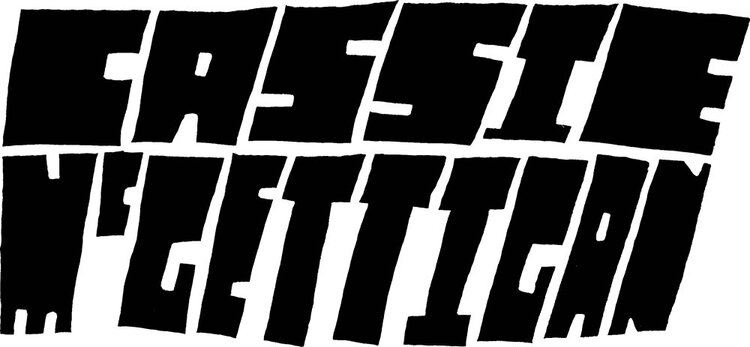Homemade pie & publications, girls & handmade gifts & gifts for Em Gift, that’s where it’s at! My chances of finding the time to make holiday gifts this year feel slim at the moment, so as a head start, I’d like to share some readymade gifts of bodacious knowledge that were made by the hands of women I admire very much. Please re-gift!
My plan is that each December day, I’ll share information and illustrations from some of my favorite lady resources that are otherwise available only in print. All share a certain calligraphy + typewriter style and are sisters to the utilitarian, anecdotal, mimeographed publishing that is most basically described as “access to tools” by its mother hen, The Whole Earth Catalog, and might also be described as DIY hippies disseminating their ideas before there were blogs for that. There are many, many other authoresses who worked in this style throughout the 1970s, and we often try to stock their books at our shop (honorable mention to Alicia Bay Laurel and Caterine Milinaire), but I’ve decided to limit myself to publications that take on, not just back to the landing, but ladies on the farm.
First, I’m going to take us through Volume 1. of Country♀Women to the extent that I am readily able. I’m missing a few issues, but the ones I have are incredibly rich. For each issue, I will share some images and illustrations and transcribe one article that seems especially nice to be able to read. Then I’m going to do a week honoring the work of Bay Area author and illustrator Anne Kent Rush.
COUNTRY♀WOMEN
On a visit to Teddy Kell‘s home in Rough and Ready last summer, a place of many moony gatherings, I was given her copies of Country♀Women by her daughter Meg. Published in the early 1970s in Albion, CA, edited collectively and costing 60¢ each, the hand-illustrated and typed journal carried this mission:
We see Country♀Women as a feminist country survival manual and a creative journal. It is for women living with women, with men, and alone, for women who live in the country already and for women who want to move out of the cities. We need to learn all that women can do in the country and learn to break out of oppressive roles and images. We need to reach out of our isolation from one another, to know that we aren’t alone, that we aren’t crazy, that there is a lot of love and strength and growing to share. Country♀Women can bring us together….
Each issue took on a particular theme, from Living Alternatives to Foremothers, and women across the country contributed written articles, poems, images, and illustrations. The front section of each issue addressed the chosen theme and the second half offered instruction on practical skills like adjusting brakes, goat healthcare, and, often, shirt-free self defense moves. It is such a delight to feel the urgency of their reports from the feminist field and to take note of what’s changed in 40 years, and what has remained the same. Good thing there’s a film for that! Women on the Land: Creating Conscious Community, produced by Mendocino Coast Films, was released earlier this year.
I’m going to start us out with Vol. 1, Issue #4: Work & Money. I hope you enjoy the series!
Bartering
by Leona
Alternative life style and creative living: these two themes motivated 16 people living in an isolated community in the Santa Cruz mountains. After doing a couple of faires selling funky hand made things and good homemade bread to raise cash, Diana struck on the idea of bartering with local farmers.
Setting out early one morning high on the idea and with 35 loaves of freshly baked whole-grain breads, two women wound their way down into nearby farm lands. Knocking on doors or calling across fields, they proposed bartering of breads for surplus fruits and vegetables. Their reception was some disbelief and distrust, but mostly pleased acceptance as if some primal sense was awakened. By noon five farms had traded bread for vegetables and agreed to do so each week. The women returned joyously, with an abundance of truly fresh vegetables and fruits.
This marked the end of produce purchases and the beginning of high energy bread baking days and adventures into the country to talk and harvest with the people who till the land.
So successful was this first attempt at bartering as a viable alternative to money that when our medical problems were going unattended for lack of funds, we decided to try it again. Visiting a local doctor, we offered whatever talents we had in trade for his professional services. Skeptical that a horde of long-hairs could carry through, but wooed by the sincerity and obvious need, he agreed.
The barter agreed upon—our group labor was tithed to the Catholic church in town to paint and varnish a new wing. We went en masse, 7 to 12 or us, and worked for 5 to 6 hours for four days—accruing some 200 plus hours of labor in the most pleasant of ways by working together.
Although the doctor was somewhat overwhelmed by the $250 that the father had evaluated our work to be worth, he made good his half of the bargain and provided medical care and medicine for the group of us over a five month period.
Two men in need of extensive dental care “paid” for it in the same way—only now the work-force became gardeners.
The contact that comes from bartering goods or labor adds new or forgotten dimension to what would otherwise be an unimaginative exchange. It can mean an economic benefit all around.
This post originally appeared on the Gravel & Gold blog.








